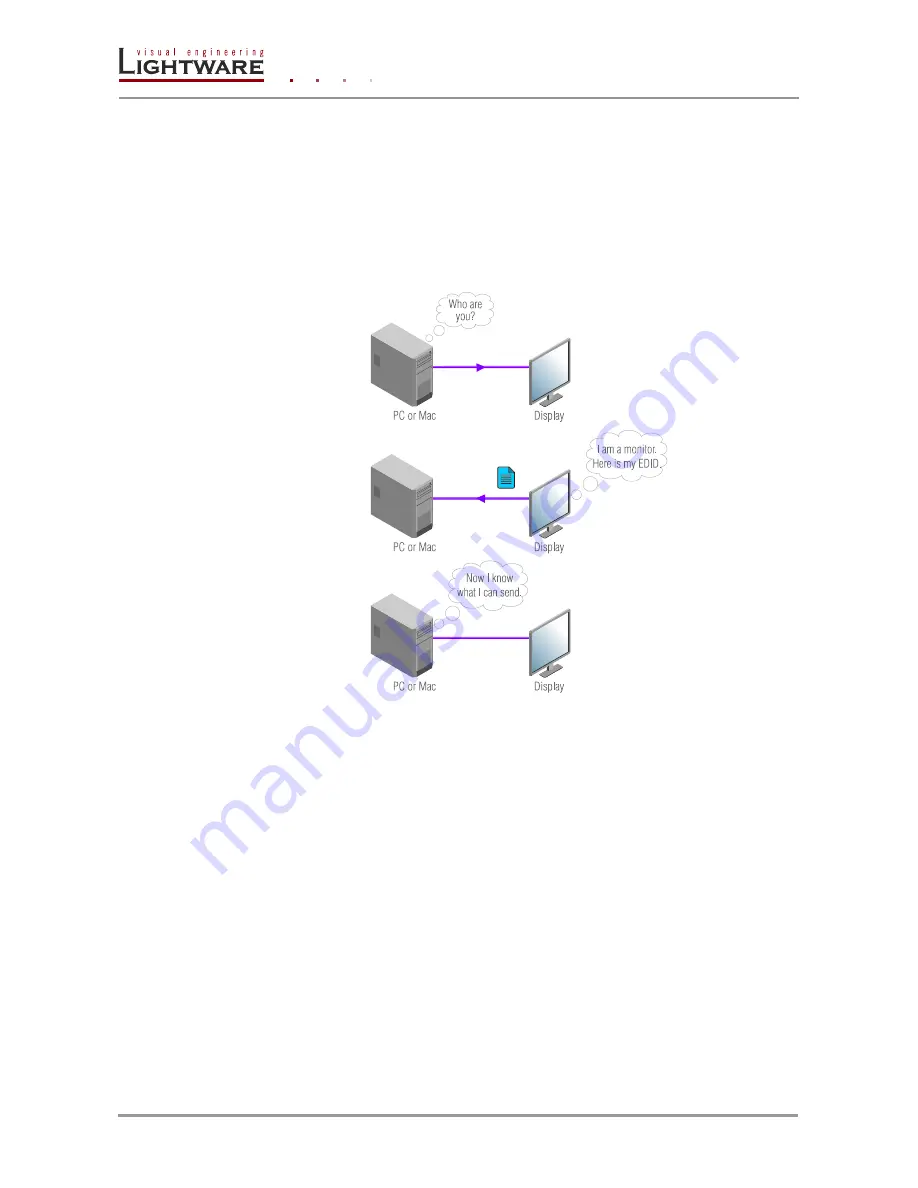
Page 12 / 107
Section 2. General description
2.5. Understanding EDID
2.5.1. Basics
EDID stands for Extended Display Identification Data. Simply put, EDID is the passport of
display devices (monitors, TV sets, projectors). It contains information about the display’s
capabilities, such as supported resolutions, refresh rates (these are called Detailed
Timings), the type and manufacturer of the display device, etc.
After connecting a DVI source to a DVI display, the source reads out the EDID to
determine the resolution and refresh rate of the image to be transmitted.
Figure 2-3. EDID communication
Most DVI computer displays have 128-byte long EDID structure. However, Digital
Televisions and HDMI capable displays may have another 128 bytes, which is called
E-EDID and defined by CEA (Consumer Electronics Association). This extension contains
information about additional Detailed Timings, audio capabilities, speaker allocation and
HDMI capabilities. It is important to know, that all HDMI capable devices must have CEA
extension, but not all devices are HDMI capable which have the extension.
2.5.2. Common problems related to EDID
Problem:
„I have changed to a different EDID on an input port of the matrix to have a
different resolution but nothing happens.”
Solution: Some graphics cards and video sources read out the EDID only after
power-
up and later they don’t sense that EDID has been changed. You need
to restart your source to make it read out the EDID again.
Problem:
„I have a UMX-OPT-TX150R and I’m using a Lightware factory preset EDID. I
would like to be able to choose from different resolutions, but my source
allows only one res
olution.”
Solution: Most Lightware factory preset EDIDs allow only one resolution, forcing the
sources to output only that particular signal. You need to select a Universal
EDID. It supports all common VESA resolutions. Additionally it also features
audio support.
Summary of Contents for UMX-OPT-TX150R
Page 1: ...UMX OPT TX150R User s Manual ...
Page 2: ......













































